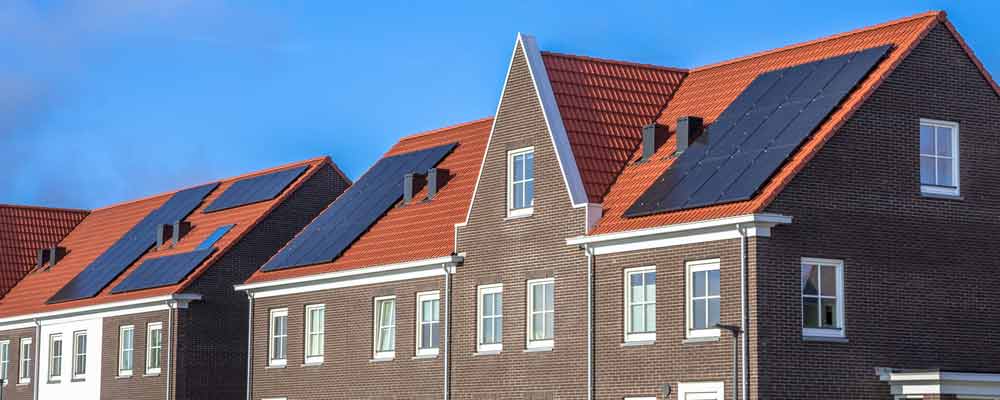Living in a home that gets direct sunlight all day has a downside to all the natural lighting: There’s a constant need for the air conditioning to be turned on full blast.
However, this makes the downstairs area, where we spend most of our time, about 15 to 20 degrees too cold. As a result, we almost always have space heaters turned on as well.
It’s the perfect situation for quickly running up costs. My average monthly electric bill during the summer is about $300.
$300 is more than anyone wants to spend, so you could imagine the horror when my wife and I saw that our most recent bill was about $700 for a little over a month.
We’ve since found out some of that had to do with bad insulation in some areas. But still, it’s clear that there must be a more efficient way to heat a house.
One way I’ve investigated this in the past is solar, particularly home batteries. I’ve come across things like the Tesla Powerwall, which has resulted in huge savings for users. Installation costs are the only drawback, but even those are coming down in cost at a fast pace.
And I saw something recently that confirmed a lot of people are in the same situation that I am: Home battery installations are through the roof.
Our Outdated Electric Grid
The amount of home batteries installed in U.S. homes skyrocketed to new highs in the first quarter of 2018.
One of the main reasons for this could be that the tax credit for solar system installation starts getting smaller in 2020.
Another reason is the U.S. energy grid is notoriously bad. It’s so bad, in fact, that it currently has more blackouts than the rest of the developed world combined.
That can largely be attributed to our outdated electric grid, which uses technology from over 30 years ago. The last time our grid got a big update, people were using it to power VCRs and cassette tape players.
Back then, Americans had less than half the amount of televisions, and 92% of homes didn’t have a computer. That’s a lot less power that the grid had to manage.
Historic Growth
The total growth in the first quarter was historic. Home installations alone totaled about 36 megawatt-hours (MWh) in the three months combined.
That means there were several thousand home batteries installed.
Although that may not sound like a lot, the 36 MWh for residential installations was more than the past three quarters combined. Overall, it’s a huge step in the right direction for the solar industry.
Cutting Energy Costs
Home batteries have been a highly anticipated way of cutting energy costs in your home. And now, there are all sorts of reasons to use them to power your home.
First, and most importantly, the cost has dropped significantly. Back in 2014, the cost per watt was $3.86. But as of the end of last year, the average cost had dropped about 20% to $3.17.
The biggest savings can be seen from people who live in cities. Residents of Boston, San Francisco and Los Angeles can expect to save over $2,000 per year on average over the next 20 years with solar.
When you consider that the national average electric bill is about $110 per month, and even higher in urban areas, it makes the most sense to switch over to solar.
Some states even have sales and property tax exemptions for homes using solar.
And speaking of property, adding solar to your home is said to increase its value by up to 20 times your annual energy bill savings. So, if you’re saving $2,000 per year like the cities I mentioned, your home value could be boosted by $24,000.
The New Normal
Estimates from industry experts suggest that this past quarter is just the beginning of what will become a significant national trend. For example, GTM Research expects the total amount of storage additions to pass 1 gigawatt-hour (GWh) next year and hit about 3.7 GWh by 2023.
That’s growth of 146% per year!
So, we’re talking about huge, sustained growth in a technology that’s now becoming more appealing for more people.
For example, a lot of the growth in battery installation last quarter came from California and Hawaii. Both of those states have great incentives when you install, and also have very high costs for “traditional” electricity.
But with the way things are going, these two states could be setting the trend for the new normal.
How to Profit
With years of growth ahead, investing in the future of home batteries is something that I believe could offer huge returns.
An easy way to invest in the industry as a whole is through an exchange-traded fund (ETF). One that I’d recommend is the Global X Lithium & Battery Tech ETF (NYSE: LIT).
Lithium is the primary material in home batteries. So, as the demand for it goes up, that ETF should see higher prices due to people wanting to cash in on the trend.
Regards,

Ian Dyer
Editor, Rapid Profit Trader
Editor’s Note: Starting next month, you can begin cashing in your “freedom checks,” and you can use the money however you would like. Perhaps to retire on your own terms … when you want and anywhere you want. Or perhaps you’ll use this money to buy that vacation home you’ve always dreamed of … or to purchase that luxury car you’ve wanted for as long as you can remember. Whatever your financial dreams, there is NO limitation on what you can do with your freedom checks! And if you haven’t staked your claim yet, you can still do so by July 1 to start getting your checks as soon as possible. For more information on this massive payout, click here.




